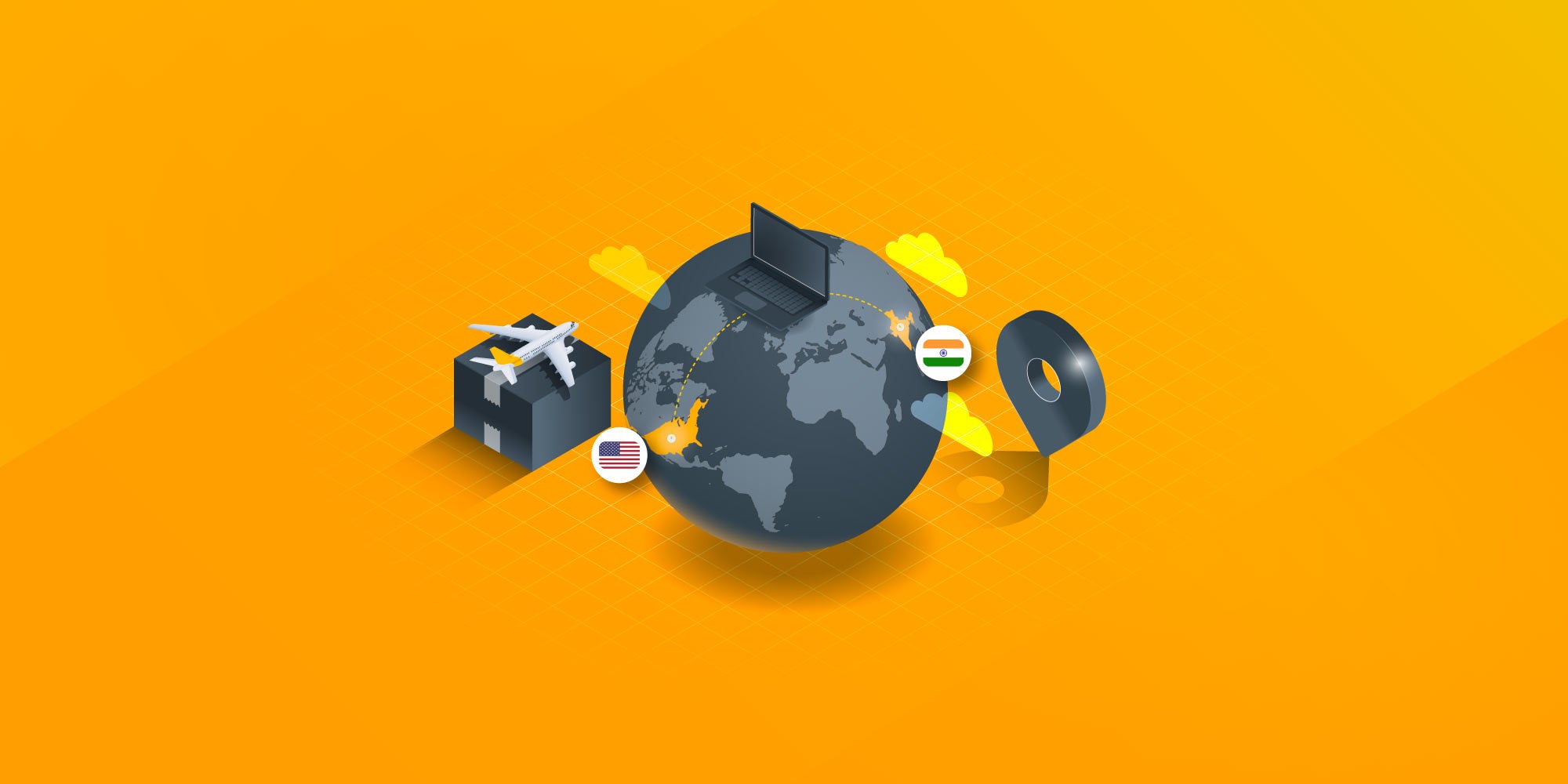The complete guide to device lifecycle management in 2025
 Zachary Trudeau
Zachary Trudeau
Managing IT devices is no longer just about keeping inventory up to date, it’s a strategic function that affects productivity, security, compliance, and cost control. Every asset, from AI-enabled laptops to IoT sensors, must be managed from acquisition to secure retirement.
This is where device lifecycle management (DLM) comes in. DLM solutions streamline workflows, automate routine tasks, and give IT leaders the tools to reduce risk while maximizing value across the entire asset fleet. According to recent research, the enterprise asset management market is projected to grow at a 9.8% CAGR through 2028 as businesses prioritize smarter IT asset strategies.
What’s new in 2025:
-
AI-driven automation predicts device failures and supports proactive maintenance.
-
Sustainability initiatives reshape disposal strategies through circular economy practices.
-
Distributed workforces demand greater automation, compliance, and Zero Trust security.
Whether you’re overseeing dozens of laptops or thousands of devices across continents, the right DLM system ensures compliance, lowers costs, and supports operational excellence.
Key takeaways
-
Five lifecycle stages: Planning, procurement, provisioning, maintenance, and decommissioning form the foundation of DLM.
-
Business impact: DLM reduces costs, strengthens security, improves productivity, and ensures compliance across the organization.
-
2025 priorities: AI-driven automation, sustainability goals, and zero-trust security architecture are reshaping lifecycle management.
What is device lifecycle management?
_5_11zon.jpg?width=600&height=300&name=device%20lifecycle%20management%20(2)_5_11zon.jpg)
Device lifecycle management is the end-to-end process of overseeing enterprise devices from planning and procurement through provisioning, maintenance, and secure decommissioning. It applies to all hardware, laptops, smartphones, tablets, and IoT devices.
A well-structured DLM strategy ensures:
-
Security: Protects company data across every stage of the device’s life.
-
Compliance: Meets regulatory requirements with consistent processes for provisioning, monitoring, and disposal.
-
Efficiency: Reduces downtime, eliminates wasteful purchases, and enables proactive planning instead of reactive fixes.
In short, DLM turns device oversight into a strategic framework that maximizes value, minimizes risk, and keeps IT ecosystems both cost-effective and compliant, whether you’re managing mobile devices for a global workforce or IoT hardware across critical infrastructure.
What are the 5 stages of device lifecycle management?
_6_11zon.jpg?width=600&height=300&name=device%20lifecycle%20management%20(1)_6_11zon.jpg)
Device lifecycle management follows five stages that ensure IT assets remain secure, compliant, and cost-effective from acquisition to retirement.
-
Planning
Audit your current IT inventory, forecast future needs, and align purchases with business growth. Smart planning prevents shortages, duplicate purchases, and supply chain inefficiencies.🔎 2025 focus: Use AI-powered analytics to predict demand based on hiring patterns, seasonal peaks, and departmental growth.
-
Procurement
Source devices from trusted vendors, balancing cost, performance, and compatibility with existing systems. Evaluate vendor terms, warranties, and sustainability practices.💡 Pro tip: In 2025, include sustainability metrics, such as vendor recycling programs and product longevity, in procurement decisions.
-
Provisioning
Configure devices with operating systems, security tools, and user-specific settings before deployment. Automate enrollment for efficiency and consistency.🔐 Zero Trust ready: Apply Zero Trust principles by enforcing multi-factor authentication and security checks before devices join the network.
-
Maintenance
Keep devices updated and operational with security patches, performance monitoring, and repairs. Preventive maintenance reduces downtime and extends device life.🤖 AI advancement: Predictive maintenance powered by AI forecasts failures, allowing proactive replacements before disruptions occur.
-
Decommissioning & disposal
At end-of-life, devices must be securely retired through certified data erasure, responsible recycling, or refurbishment.♻️ Circular economy approach: Extend lifecycles through reuse and sustainable recycling, aligning with corporate ESG goals and compliance standards.
Together, these five stages form a structured DLM framework that improves security, reduces costs, and maximizes device value.
What are the types of device lifecycle management?
_4_11zon.jpg?width=600&height=300&name=device%20lifecycle%20management%20(3)_4_11zon.jpg)
Device lifecycle management strategies vary depending on the type of device being managed. Two primary categories, mobile device and IoT, require different approaches to ensure security, efficiency, and compliance across your IT infrastructure.
| Aspect | Mobile device LCM | IoT device LCM |
|---|---|---|
| Devices managed | Laptops, smartphones, tablets | Smart TVs, security systems, sensors, IoT hardware |
| Lifecycle coverage | Procurement, provisioning, maintenance, secure disposal | Tailored provisioning, configuration, firmware updates |
| Security focus | Regular OS & software updates, patching, encryption, firewalls, anti-malware, data protection | Firmware patching, anomaly detection, secure configurations |
| Inventory tracking | Real-time tracking through MDM software; usage monitoring for distributed teams | Continuous monitoring for performance, anomalies, and device status |
| Compliance needs | Privacy regulations (GDPR, CCPA, HIPAA) and internal security standards | Industry-specific regulations for data governance and connectivity (ISO, NIST) |
| 2025 considerations | Hybrid work adds complexity: global shipping, local tax compliance, regional security standards, frequent upgrades | IoT lifecycle management is increasingly critical for enterprise security and performance |
What are the challenges of device lifecycle management?
_3_11zon.jpg?width=600&height=300&name=device%20lifecycle%20management%20(4)_3_11zon.jpg)
As IT ecosystems grow more global and diverse, managing devices across regions and categories creates new complexities. Here are the main challenges IT teams face in 2025:
-
Procurement complexity: Coordinating with multiple vendors, negotiating contracts, and forecasting device demand can cause delays that slow down onboarding and impact productivity.
-
Inventory management gaps: Without real-time tracking, organizations risk asset loss, underutilization, and downtime. Traditional inventory methods don’t scale well in distributed or hybrid work environments.
-
Compliance pressure: IT must navigate privacy, retention, and disposal regulations across multiple jurisdictions. Secure data erasure, documented processes, and audit trails are essential to meeting compliance requirements.
-
Security risks at every stage: Unpatched or misconfigured devices create vulnerabilities. Security must be enforced consistently across procurement, provisioning, maintenance, and disposal.
-
Cost optimization challenges: Balancing procurement, maintenance, and replacement costs requires careful planning. Without a structured DLM strategy, organizations often overspend or extend device lifespans beyond acceptable risk thresholds.
Meeting these challenges requires structured processes, automation, and platforms designed specifically for global device lifecycle management.
What are the benefits of device lifecycle management?
_2_11zon.jpg?width=600&height=300&name=device%20lifecycle%20management%20(5)_2_11zon.jpg)
A structured DLM strategy delivers tangible results across cost, security, compliance, and employee productivity.
-
Efficiency & productivity: Streamlined workflows reduce manual IT tasks, accelerate onboarding, and improve daily operations.
-
Real-time asset visibility: Centralized tracking enables smarter planning, faster troubleshooting, and more accurate replacement decisions.
-
Better asset utilization: Identifying idle or underused devices allows reassignment, extending lifespan and eliminating unnecessary purchases.
-
Cost savings: Proactive maintenance and predictive planning reduce surprise expenses while improving budget control.
-
Expert IT support: Modern DLM platforms include automation, secure provisioning, and updates, easing the burden on internal teams.
-
Employee experience: Reliable devices and quicker setup improve satisfaction and retention, especially important in distributed teams.
-
Security posture: Automated patching, consistent provisioning, and certified disposal reduce vulnerabilities and strengthen compliance.
In short, DLM transforms device management from a reactive process into a strategic enabler of efficiency, compliance, and long-term cost control.
What to consider when choosing a DLM solution?
_1_11zon.jpg?width=600&height=300&name=device%20lifecycle%20management%20(6)_1_11zon.jpg)
Selecting the right device lifecycle management platform depends on your organization’s current needs and future growth. A strong solution should provide comprehensive coverage, scalability, and compliance. Key factors to evaluate include:
-
Cross-platform support: Ensure compatibility with all major operating systems (Windows, macOS, iOS, Android) and IoT devices. This prevents management blind spots and keeps all assets visible.
-
End-to-end lifecycle coverage: From procurement to secure disposal, the solution should include automated patching, remote management, predictive maintenance, and integrations with HR, MDM, procurement, and ITSM tools.
-
Transparent pricing: Choose a platform with clear, predictable costs that scale with your fleet size, avoiding hidden fees for support or add-ons.
-
Global scalability & compliance: Look for providers with international coverage, local compliance expertise, and infrastructure to manage devices across borders.
-
Security-first design: Platforms should align with zero-trust principles, automated threat detection, and auditable reporting to meet regulatory requirements.
-
Sustainability features: Certified e-waste disposal, refurbishment options, and carbon tracking align DLM with corporate ESG commitments.
How GroWrk handles your device lifecycle management
GroWrk provides an end-to-end device lifecycle management platform, covering procurement, provisioning, maintenance, and certified disposal. Our solution helps IT teams manage global fleets efficiently while ensuring compliance, cost savings, and sustainability.
-
Centralized global lifecycle management: Track and manage devices across 150+ countries. Every activity, from ordering and shipping to retrieval and recycling, is logged and automated, giving IT full visibility and reducing manual effort.
-
Intelligent procurement & provisioning: Devices are sourced via GroWrk’s global vendor network and delivered pre-configured to your IT environment. Integration with MDM ensures consistent security policies and faster onboarding for distributed teams.
-
Proactive maintenance with AI support: Automated updates, scheduled maintenance, and 24/7 assistance through GroWbot keep devices secure and optimized while easing pressure on IT staff.
-
Secure, sustainable decommissioning: End-of-life devices undergo certified data erasure, responsible recycling, and compliant retrievals worldwide, supporting ESG and regulatory goals.
With GroWrk, IT teams gain a single platform for the entire device lifecycle, improving efficiency while reducing risks and costs.
The GroWrk advantage
Learn how GroWrk has provided device lifecycle management solutions for global teams:
Case study: Upwork—global device logistics at scale
Challenge: Upwork’s IT team struggled to manage device shipping across 30+ countries, facing customs delays, lost inventory, and time-consuming offboarding.
Solution: GroWrk provided a single platform for procurement, provisioning, real-time tracking, and automated device retrieval, integrated with Upwork’s identity system.
Results:
-
Onboarded 230+ employees worldwide
-
Cut 2+ hours of IT time per shift
-
Achieved 100% SLA compliance for device returns
Case study: Orium—streamlined IT across LATAM
Challenge: Orium, a remote-first software studio, needed to equip hires across Latin America with consistent, secure IT equipment while staying compliant across multiple jurisdictions.
Solution: GroWrk managed procurement, shipping, MDM integration, tax compliance, and device recovery in multiple countries through one platform.
Results:
- Supported 180+ employees across LATAM
- Improved onboarding speed and experience for remote hires
- Simplified compliance and cross-border logistics
Why businesses choose GroWrk for device lifecycle management
For organizations managing distributed teams, GroWrk goes beyond visibility, delivering control, automation, and strategic value at every stage of the device lifecycle.
-
One platform, global reach: Manage procurement, provisioning, tracking, maintenance, and disposal across 150+ countries without third-party logistics handoffs. A single system reduces gaps and risk.
-
Configurable automation at scale: Customize lifecycle workflows to match policies, compliance needs, and timelines. From automated provisioning to triggered offboarding, GroWrk adapts to your business.
-
Data-driven intelligence: Real-time dashboards and detailed reporting provide insights into utilization, depreciation, and optimal replacement cycles — enabling smarter decisions.
-
Built-in compliance expertise: From GDPR to R2 certification and regional tax laws, GroWrk embeds compliance into its workflows, removing the hidden costs of external consultants.
-
Enterprise-grade support included: 24/7 support teams, AI-powered assistance, and rapid resolution are standard, with no tiered pricing or add-on fees.
-
Sustainability by design: GroWrk maximizes asset lifecycles, ensures certified recycling, and delivers sustainability reports to support ESG initiatives.
GroWrk enables IT teams to scale with confidence, managing global devices securely, sustainably, and cost-effectively from a single platform. Schedule a call with one of our product specialists to learn more.
Frequently Asked Questions
What’s the difference between Device Lifecycle Management (DLM) and IT Asset Management (ITAM)?
-
ITAM covers all IT assets, including software, cloud services, and infrastructure.
-
DLM focuses specifically on the lifecycle of physical devices, from procurement through secure disposal.
How does DLM improve IT security?
By enforcing consistent provisioning, automated patching, and certified disposal, DLM eliminates vulnerabilities such as unmanaged devices, delayed updates, or insecure data destruction.
What are the first steps to building a DLM strategy?
Begin with a device audit, establish policies for each lifecycle stage, select a platform that integrates with existing IT systems, and define success metrics. Many organizations pilot DLM in one region or department before scaling globally.
How fast can organizations see ROI from DLM?
Most companies report measurable improvements in 3–6 months and achieve full ROI within 12–18 months through reduced costs, better utilization, and improved compliance.


.png)




